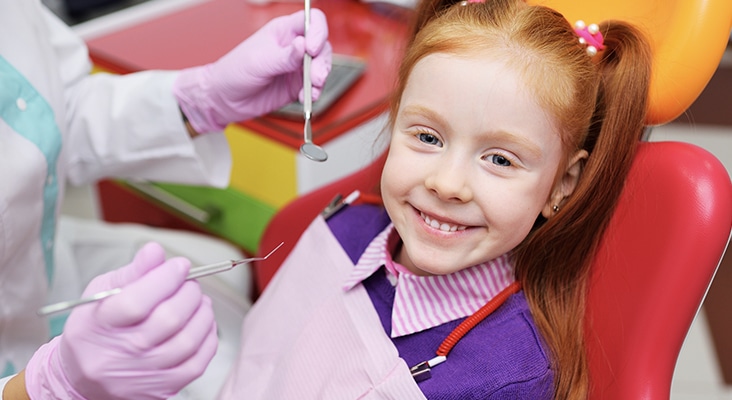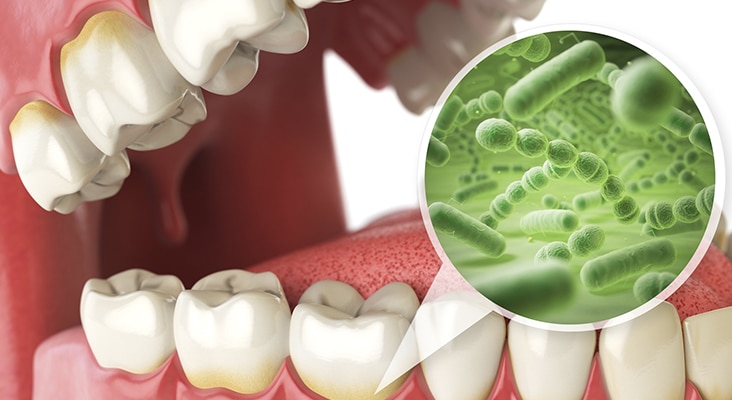Caries Prevention Protocol
Caries management by risk assessment (CAMBRA) is an evidence-based protocol designed to prevent, reverse, and/or treat caries before the disease process causes irreversible damage to tooth structure.

Risk Assessment
Caries management by risk assessment (CAMBRA) is an evidence-based protocol designed to prevent, reverse, and/or treat caries before the disease process causes irreversible damage to tooth structure. CAMBRA is unique because it considers the entire caries disease process, instead of just progression of the lesion itself. This protocol treats caries as a highly infectious and transmissible bacterial disease that can be effectively treated and/or reversed. While traditional therapy has emphasized restorative care, CAMBRA focuses on prevention and early intervention by identifying at-risk patients and implementing strategies to prevent or reduce caries development.
Photo Credit: undefined undefined / iStock / Getty Images Plus

Past Experience
An important indicator of future caries risk is previous caries experience; and while this is key when treating children and adolescents, it has limitations when treating infants and toddlers. Caries risk factors are identified as biological (eg, susceptible host, diet, microflora levels, and socioeconomic status), and clinical (eg, plaque accumulation, white spot lesions, precavitated lesions, and caries). Additional factors include the presence of orthodontic appliances, xerostomia (disease-related or medication induced), special health care needs, bottle or nursing habits, incipient lesions (both radiographic and clinical), and caries within the first 3 years of life.
Photo Credit: Kalinovskiy / iStock / Getty Images Plus

Bacteria Evaluation
The evaluation of the bacterial levels present in saliva is an important factor in caries risk assessment. Saliva serves many functions, including lubrication of the mucosa and helping in mastication, swallowing and speech. Saliva also protects teeth by acting as a buffer and neutralizing acids produced during the intake of foods and beverages, thus aiding in the remineralization of the tooth surface. The presence of Streptococcus mutans in saliva and plaque—regardless of whether caries is present—is an indicator of risk. A number of commercially available kits are available to help clinicians analyze the microflora present in a patient’s saliva.
Photo Credit: Bet_Noire / iStock / Getty Images Plus

Importance of Diet
The frequency of food and liquid intake, especially snacks and sugary drinks, must be evaluated, as the consumption of fermentable carbohydrates significantly contributes to the caries process. Bacteria produce acids that feed on fermentable carbohydrates, leading to enamel breakdown. In order to promote better oral health, oral hygiene and self-care must be assessed and appropriate instruction provided. The type of toothbrush, amount of fluoride-containing toothpaste used, frequency of brushing and flossing—as well as the use of irrigation devices and fluoride supplements and rinses—should be evaluated for each patient. Previous caries experience of patients, siblings, and their caregivers (mainly mothers) must also be considered.
Photo Credit: a_namenko / iStock / Getty Images Plus

In-Office Treatment
Prevention-based office visits include professional prophylaxis, topical fluoride treatment, or application of fluoride varnish. The use of pit and fissure sealants is also an effective approach. Sealants can be placed on noncavitated primary and permanent posterior teeth, or early noncavitated lesions on permanent posterior teeth. Detecting early minimal caries and placing a sealant over the lesion can inhibit pathogens and arrest lesion progression. This is key in the quest to avoid restorative care. Research into the use of silver diamine fluoride has shown it to be an effective management tool in arresting certain active caries. Resin-infiltration technology is another minimally invasive approach that fills and reinforces demineralized enamel in incipient lesions without the need to reduce tooth structure or provide anesthesia. In respect to overall caries management, CAMBRA has been embraced as a key component of minimally invasive dentistry.
Photo Credit: Aja Koska / E+

At-Home Therapies
Preventive therapy for patients outside of professional settings includes the recommendation of gum, hard candies, or lozenges containing polyols (such as xylitol or sorbitol) for children older than 5 years. The gum should be chewed for at least 10 minutes following meals. To maximize benefits, a dose of 5 g to 8 g per day divided over two doses or three doses must be ingested. Patients at low to moderate risk of caries should use over-the-counter fluoride rinses at 0.05% concentrations.

